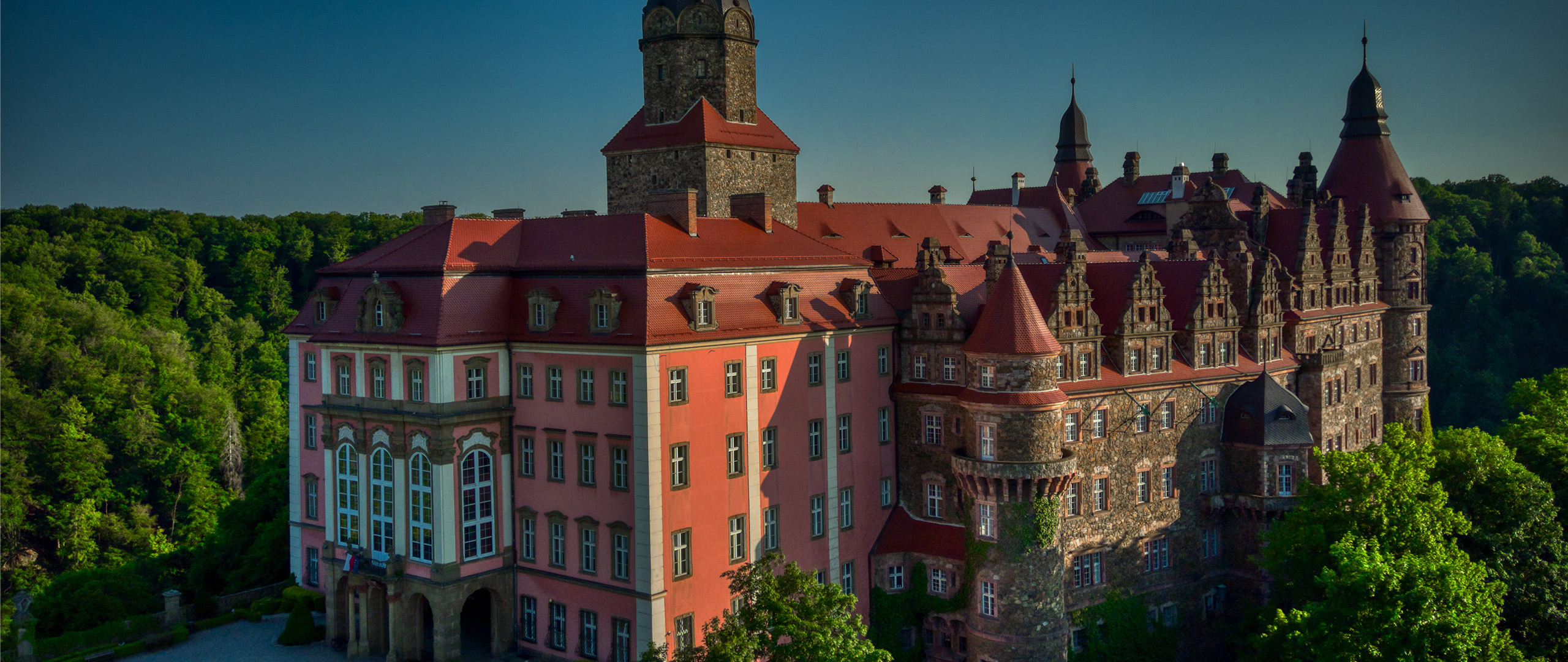“We received your contact information from the Magdeburg Lost Art Internet Database,” began the e-mail which Magda Woch, of the castle’s Cultural and Touristic Division, received on the morning of 9 September, 2016. Martin Beisswenger’s message continued: “This concerns three books from the Książ Library. Out of pure curiosity, I bought them at a certain antiquarian bookshop in Moscow many years ago, and later brought them to Germany. From that time they have been lying in an old cupboard; I had forgotten about them until, quite recently, I discovered them there.”
This first part of Mr. Beisswenger’s e-mail was enough to quicken our pulse. Since the beginning of 2015, the Książ management group had succeeded in recovering two publications from the former Hochberg Library: the Kroniki Saksońskie (Saxon Chronicles) and an classic mathematics textbook – and suddenly, we had this news about three further items.
At the beginning of the 18th century, Konrad Ernst Maximilian began to collect unique works for the Castle library, thereby creating the basis of the Hochberg’s ever-growing collection. In the same space could be found works related to science and nature, historically valuable instruments used in physics and optics: a true room of curiosities, or Kunstkamera. In 1897, when the library was moved from the castle to the gate building, it contained over 60,000 volumes.
In 1942-1943, the Nazis began to “safeguard” the Hochbergs’ collection of works, gradually removing them from the Castle. In the period from 1945 to 1946, when the Russian army was stationed in the castle, the remaining part of the Książ Library was plundered. It is likely that the majority of its works were taken somewhere in what was then the Soviet Union.
“All three books have the characteristic oval stamp, ‘Fürstensteiner Bibliothek’, which may also be viewed on the Internet (http://www.lostart.de/EN/Fund/435855),” Martin Besswenger’s e-mail continued. Specifically, there are the following works from the seventeenth and eighteenth centuries:
1. Volume II of the collective works of Thomas Hobbes (containing the following components: De Cive, Dialogus Physicus de Nature Aeris, De principiis et ratiocinatione geometrarum and Leviathan), probably printed in 1668 in Amsterdam
2. Historiae Conciliorum ecclesiasticae (History of the Church Councils), from the late eighteenth century
3. The first volume of the German War Chancellery, 1762.
What value have these books for the Castle? “When it comes to their sentimental and emotional value – for me, 150%,” Magdalena Woch asserts. “Perhaps they are not such unique works as, for example, a first edition copy of Luther’s Bible, but we have always had only fragmentary lists of books that were once in the Hochbergs’ library. Those lists persuaded us that it was a very rich collection. Now we have further items in our hands, and our knowledge has increased. What is more, up to now all our works have been from the eighteenth century; this time we have managed to acquire one from the seventeenth.”
It is especially noteworthy that one of the recovered books tells the story of German wars in the eighteenth century, but in an unusual way: through the prism of all the war correspondence which was conducted at the time. Characteristic of these items is their white bindings. The reason is that these are not their original bindings, but rather a standard binding in the Książ Library; this characteristic white is yet a further mark of previous times.
“I would be very happy to see the books return to their place of origin”: thus ended the e-mail from this remarkable donor. It is difficult to express our gratitude for such gestures. Certainly they also grant us hope for the future:
“The whole gift is very special, as it is sheer serendipity: we weren’t looking for these books, but rather they found us,” Magda Woch points out. “We sincerely hope that such events may have a ‘domino effect’, leading us to rebuild the library – which is, after all, part of the Hochberg collections.”






